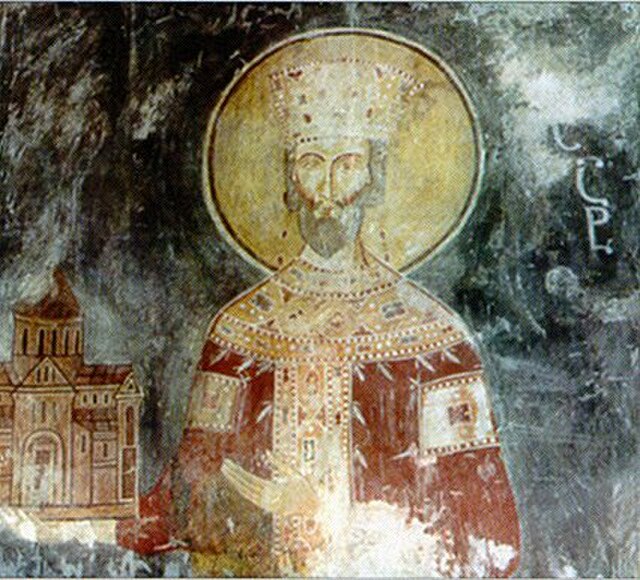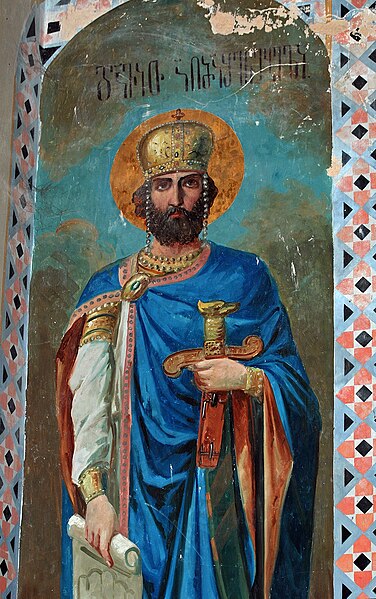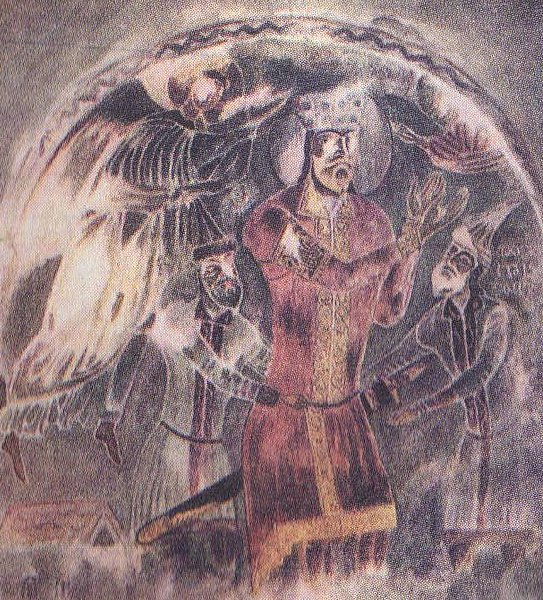The Georgian–Seljuk wars, also known as Georgian Crusade, is a long series of battles and military clashes that took place from c. 1048 until 1213, between the Kingdom of Georgia and the different Seljuqid states that occupied most of Transcaucasia. The conflict is preceded by deadly raids in the Caucasus by the Turks in the 11th century, known in Georgian historiography as the Great Turkish Invasion.
A miniature depicting a battle with the Georgian king David IV the Builder. Le Roman de Troie by Benoît de Sainte-Maure. King David is shown in purple robe on the right, wearing crown-helmet.
The eristavi Kvariani, as a donor figure wearing sharbush, qaba and tiraz. Church of the Archangels, Zemo-Krikhi, Racha, northern Georgia. 11th century, Inv. No. 03086-75.
David IV, detail from icon at Saint Catherine's Monastery, 12th century.
Demetrius I by Michael Maglakeli, from Matskhvarishi, 1140. He is wearing front-opening qaba with Arabic tiraz bands inscribed in Kufic script.
The Kingdom of Georgia, also known as the Georgian Empire, was a medieval Eurasian monarchy that was founded in c. 1008 AD. It reached its Golden Age of political and economic strength during the reign of King David IV and Queen Tamar the Great from the 11th to 13th centuries. Georgia became one of the pre-eminent nations of the Christian East, and its pan-Caucasian empire and network of tributaries stretched from Eastern Europe to Anatolia and northern frontiers of Iran, while Georgia also maintained religious possessions abroad, such as the Monastery of the Cross in Jerusalem and the Monastery of Iviron in Greece. It is the principal historical precursor of present-day Georgia.
A fresco of King Bagrat III from Bedia Cathedral
David IV of Georgia, a fresco from the Shio-Mgvime monastery
Gelati Monastery, a UNESCO World Heritage Site
Coronation of Demetrius I, a fresco from Matskhvarishi, 1140







